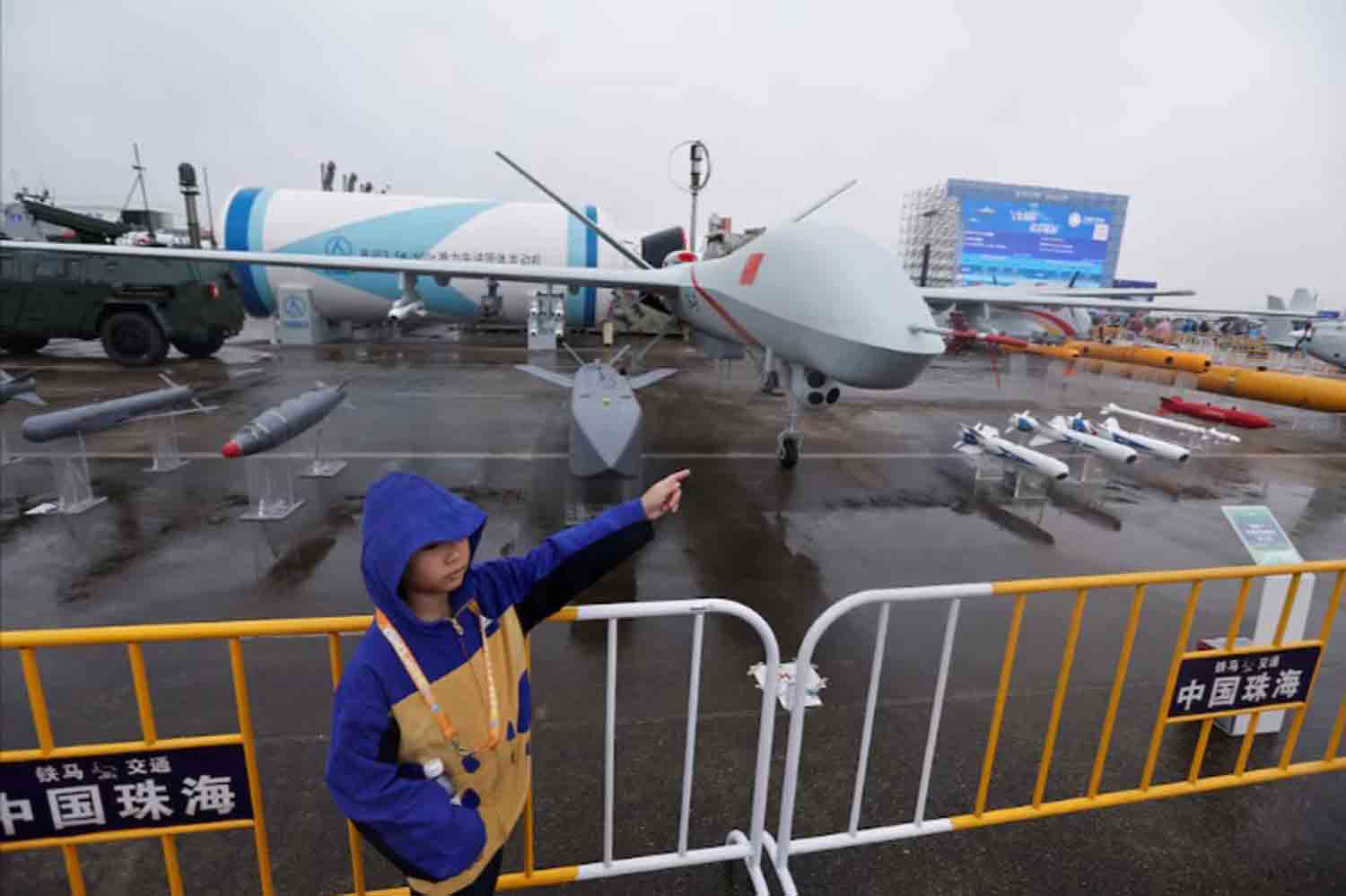The trade segment of China‘s largest air show in Zhuhai concluded on a rainy Thursday, coinciding with the visit of Russia‘s Security Council secretary, just days after the Russian-made Su-57 stealth jet made its debut appearance outside of its home country.
Military equipment was showcased in the exhibition hall, where it was observed by Sergei Shoigu, as reported by the state media outlet Global Times. The former defense minister is in China for the annual strategic security discussions.
China showcased its influence on the global stage by hosting a delegation from Saudi Arabia, which had its inaugural pavilion at the event, while also reinforcing its close relationship with Russia, despite the latter’s isolation from Western nations and their allies due to the ongoing conflict in Ukraine.
The commercial aviation aspect of the air show was notably smaller than in previous years, shifting the focus to military technology. A diverse array of hardware, including air-defense systems, radars, missiles, and aircraft, filled the exhibition grounds both indoors and outdoors.
The event showcased the public introduction of China’s J-35A stealth fighter, alongside a two-seat mockup of the J-20 stealth fighter. Additionally, advanced helicopters, stealthy drones, and missile defense systems were also highlighted.
Malcolm Davis, a senior analyst at the Australian Strategic Policy Institute, noted, “These advancements indicate a sustained and extensive modernization of the People’s Liberation Army’s capabilities aimed at countering U.S. and allied intervention efforts. Collectively, they enhance the lethality and reach of China’s anti-access/area denial (A2AD) strategy.”
COMAC did not reveal the quantity of C929 aircraft that Air China intends to acquire or the expected delivery timeline. However, it confirmed that Hainan Airlines has placed a firm order for 60 C919 narrowbody jets and 40 C909s. Additionally, Guizhou Airlines has entered into a purchase agreement for 30 C909 planes, with 20 of those being firm orders and the rest provisional.
State-owned aerospace firm AVIC introduced a model of a unique offering: a spaceplane designed to transport cargo to China’s space station. Among international exhibitors, Airbus reported that the certification process for its A330neo jet in China is progressing well, with the first delivery of this widebody aircraft anticipated in 2025.
Airbus’s CEO for China, George Xu, expressed that the company is “very much pro-free trade” when questioned by journalists regarding the potential market effects stemming from the ongoing dispute between the European Union and China over electric vehicles, as well as the possibility of a transatlantic trade conflict following Donald Trump’s election as U.S. president, during which he promised to implement extensive tariffs.
Embraer, recognized as the world’s third-largest aircraft manufacturer, is focusing on regional and executive aircraft with a capacity of up to 150 seats, which are slightly smaller than the best-selling A320 and 737 families produced by Airbus and Boeing, respectively, and competes with the Airbus A220.
At the Zhuhai Airshow, Martyn Holmes, the chief commercial officer of Embraer, highlighted the significance of Chinese President Xi Jinping’s upcoming visit to Brazil for the G20 summit scheduled for this month.
Holmes remarked, “This is an exciting opportunity for us to engage in discussions about our supply chain with Chinese suppliers and explore how we can evolve.” China holds the position of Brazil’s largest trading partner, and earlier this year, Brazilian President Luiz Inacio Lula da Silva expressed his desire to establish a “long-term strategic partnership” with China.
Discover more from Defence Talks | Defense News Hub, Military Updates, Security Insights
Subscribe to get the latest posts sent to your email.





